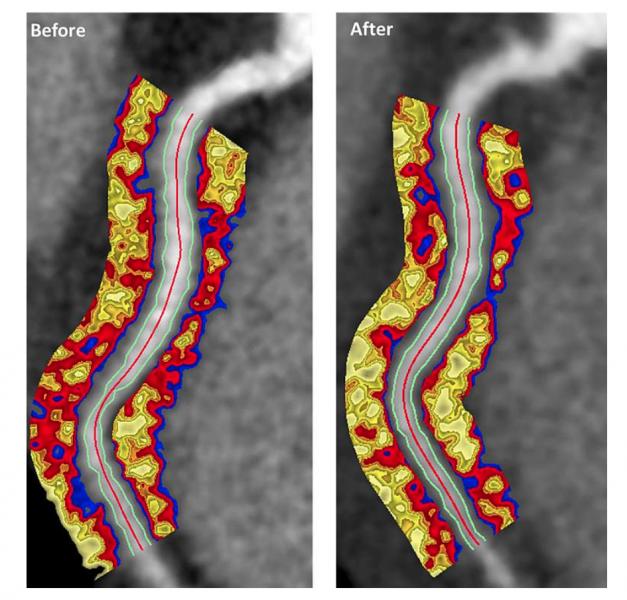August 15, 2019 — Bardy Diagnostics Inc. announced that HealthTech Arkansas, a healthcare accelerator and investment ...
Cardiac Diagnostics
This channel includes news, videos, podcasts and other content on new technology innovations for cardiac diagnostic systems and techniques. This includes laboratory testing, blood tests including troponin testing, electrocardiogram (ECG) systems, point of care testing systems, genetic testing, cardiac patient monitoring devices including wearable sensors, and studies showing new ways to diagnose heart diseases.
August 13, 2019 — Non-invasive techniques and devices for assessing blood flow and other diagnostic considerations for ...
This is an example of an automated calcium scoring software to speed review of coronary artery calcium (CAC) scoring car ...
When the patients of Michael Boler, M.D. need cardiac monitoring, the Holter monitor is no longer his first choice. “The ...
August 7, 2019 — Hormone replacement therapy is a common treatment for menopause-related symptoms, and new research from ...
August 6, 2019 — Blood pressure monitoring might one day become as easy as taking a video selfie, according to new ...
August 6, 2019 — When used with a common heart scan, machine learning, a type of artificial intelligence (AI), does ...
When the patients of Michael Boler, M.D. need cardiac monitoring, the Holter monitor is no longer his first choice. “The newer ECG devices we have now are so much less cumbersome. It’s like wearing a Band-Aid versus carrying a bulky device,” said the Greenwood, Mississippi internist. “My patients prefer the more comfortable, wire-free form factor, and the quality is as good as, or better, than the Holter,” continued Boler. “Plus, my patient compliance has increased. With the Holter, the leads sometimes come off. The patient may think the device isn’t working, so they take it off and we have to restart the process.”
August 5, 2019 — A West Virginia-based rural medical outreach event showcased the use of point-of-care technology in an ...

New technologies have been developed that may replace the traditional pressure wires and adenosine to assess the fractio ...

July 31, 2019 — Researchers found anti-inflammatory drug therapies used to treat moderate to severe psoriasis can ...
Sudden cardiac death (SCD) is the leading medical cause of death in young athletes and its impact is consistent worldwide. Most professional athletes in the United States are required to take part in comprehensive cardiovascular screening programs to identify often-asymptomatic congenital or inherited heart disorders, and other cardiac risk factors. There remains a debate however, whether to mandate ECGs as part of pre-participation screening programs for student athletes at the collegiate and high school levels or even at younger ages.
July 31, 2019 — Silicon Valley-based digital health company Eko announced Eko Home, a new service that enables precise r ...
Nate Bachman, graduate research assistant in the Human Cardiovascular Physiology Lab of the Dept. of Health and Exercise ...
July 29, 2019 — The loss of a single gene two to three million years ago in our ancestors may have resulted in a heighte ...
Advances in the technology of wearable cardiac monitors are improving both the experience of the patient and the ...
Arthur Agatston, M.D., clinical professor of medicine, Florida International University, Herbert Wertheim College of ...

July 24, 2019 — Atrial fibrillation (AFib) is a common abnormal heart rhythm. It is treated either with medications or ...

Cardiac amyloidosis is a highly morbid and underdiagnosed infiltrative cardiomyopathy that is characterized by the ...


 August 15, 2019
August 15, 2019













